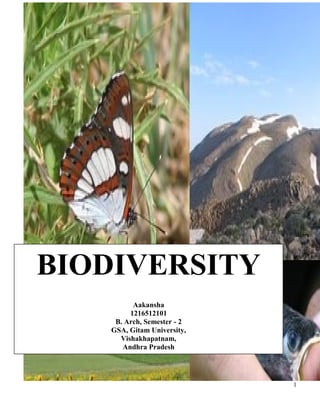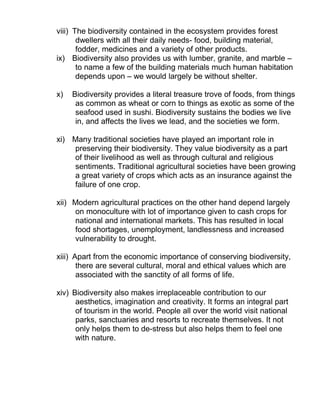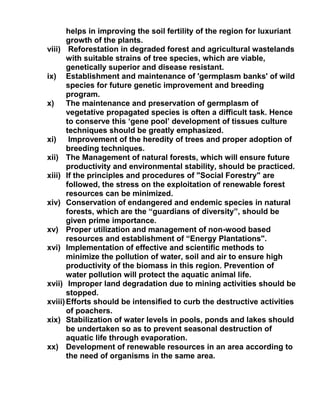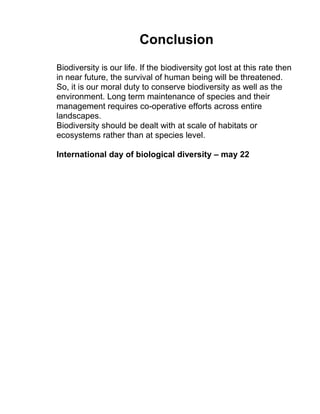Biodiversity refers to the variety of life forms on Earth and the ecological roles they perform. There are several types of biodiversity including genetic, species, ecological, and functional diversity. India is considered a megadiverse country, home to over 47,000 plant and 89,000 animal species. However, biodiversity is under threat from habitat loss, pollution, climate change, and overexploitation. The loss of biodiversity upsets ecosystem balance and reduces nature's benefits to humans, including food, fuel, medicine, and ecological services like waste degradation and climate regulation. Conservation of biodiversity through protected areas and sustainable practices is important to protect nature and humanity.

























